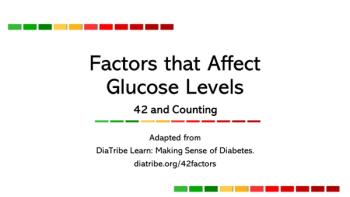
Phlebotomy Holds No Benefit for Peripheral Arterial Disease
WHITE RIVER JUNCTION, Vt. -- Reducing the body's stores of iron through phlebotomy does not appear to improve cardiovascular outcomes in patients with peripheral arterial disease, though some questions remain, researchers here said.
WHITE RIVER JUNCTION, Vt., Feb. 13 -- Reducing the body's stores of iron through phlebotomy does not appear to improve cardiovascular outcomes in patients with peripheral arterial disease though some questions remain, researchers here said.
Biannual phlebotomy for patients with symptomatic peripheral arterial disease did not reduce all-cause mortality or the combined endpoint of death, myocardial infarction and stroke (P=0.17 and P=0.20, respectively), said Leo R. Zacharski, M.D., of the Veterans Affairs Medical Center here, and colleagues in the Feb. 14 issue of the Journal of the American Medical Association.
Preclinical and clinical studies have linked iron-related oxidative stress to the pathogenesis of atherosclerotic cardiovascular, Dr. Zacharski and colleagues said.
However, inconsistent and largely negative epidemiologic studies have added fuel to the debate over the utility of offloading excess iron in prevention of cardiovascular disease, said Frank B. Hu, M.D., Ph.D., of the Harvard School of Public Health, in an accompanying editorial.
"For this reason, results have been eagerly awaited from the first randomized controlled clinical trial assessing iron-store reduction and hard end points," he wrote.
Unfortunately, "the results from this well-designed and executed trial generate more questions than answers," because it was underpowered, Dr. Hu concluded.
"Fortunately, it is not necessary to wait for additional data to implement effective strategies that can prevent coronary arteries from getting 'rusty,'" Dr. Hu said.
"Even though the question of whether reduced iron stores and coronary heart disease risk are causally linked remains unanswered, there is solid evidence that regular exercise and maintaining a healthy weight can reduce both iron stores and risk of coronary heart disease," he added.
The multicenter, single-blind trial included 1,277 patients with symptomatic but stable peripheral arterial disease. Almost all the patients were white men (81.9% to 86.6% and 98.8%, respectively), and the mean age was 67. All women in the study were postmenopausal. Iron supplementation and blood donation were not allowed during the study.
Participants were randomized to control or phlebotomy at six-month intervals with removal of a blood volume calculated with a formula determined in the Iron (Fe) and Atherosclerosis Study (FeAST) to achieve ferritin reduction without iron deficiency.
This sample size was lower than expected as was compliance (16% noncompliance in the first year and 3.2% thereafter), so the study had only 68% power to detect a 30% reduction in mortality.
Baseline characteristics were similar between groups with few exceptions. The iron reduction group averaged five phlebotomy episodes per patient with a mean of 920 mL removed to achieve ferritin reduction and 411 mL of blood removed at each session thereafter to maintain the reduction.
During the mean of about 4.5 years of follow-up, the results were:
- No significant improvement in the primary endpoint of all-cause mortality for the ferritin reduction group (hazard ratio 0.85, 95% confidence interval 0.67 to 1.08; P=0.17).
- No significant improvement in the secondary, combined endpoint of death plus nonfatal myocardial infarction and stroke for the treatment group (HR 0.88, 95% CI 0.72 to 1.07, P=0.20).
- No difference in myocardial infarction between groups (HR 1.01, 95% CI 0.70 to 1.47, P=0.95).
- No difference in stroke between groups (HR 1.22, 95% CI 0.71 to 2.10, P=0.46).
Excluding patients with low baseline ferritin levels (less than 60 ng/mL) and in those with less than 50% adherence did not alter the findings for either primary or secondary endpoints.
However, there was a significant effect for the youngest patients (age 43 to 61). Compared with control patients, iron reduction improved all-cause mortality (unadjusted HR 0.47, 95%CI 0.24 to 0.90, P=0.02) and the combined endpoint of death, nonfatal myocardial infarction and stroke (unadjusted HR 0.41, 95% CI 0.24 to 0.68, P
Newsletter
Enhance your clinical practice with the Patient Care newsletter, offering the latest evidence-based guidelines, diagnostic insights, and treatment strategies for primary care physicians.

































































































































































































































































































